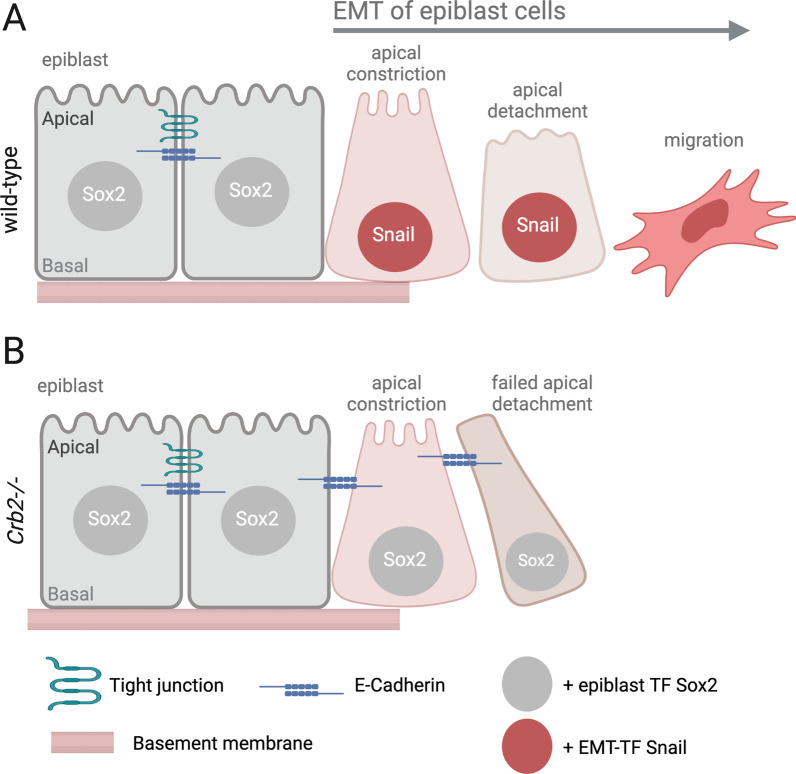Fig. 6.
Crumbs2 mediates adherens junction disassembly and apical detachment of epiblast cells as they undergo EMT during gastrulation in the mouse embryo. A During gastrulation, wild-type epiblast cells near the primitive streak undergo EMT that involves basement membrane breakdown, apical constriction and basal positioning of the nucleus, and loss of E-cadherin containing adherens junctions (AJs). EMT correlates with downregulation of the transcription factor (TF) Sox2 and upregulation of the EMT-TF Snail1. Cells that successfully undergo EMT detach from the epithelium and migrate into the primitive streak in a process called ingression. B In Crumbs2 mutant (Crb2-/-) embryos, mosiacally labeled epiblast cells undergo apical constriction and basal nuclear displacement, but fail to detach from the epithelium [91]. Crb2-/- cells develop an elongated morphology and remain attached to the epithelium via E-cadherin. Apical Myosin II accumulation is reduced in Crb2-/- epiblast relative to wild-type (not shown), suggesting a link between Crb2 and actomyosin activity during EMT [91]

